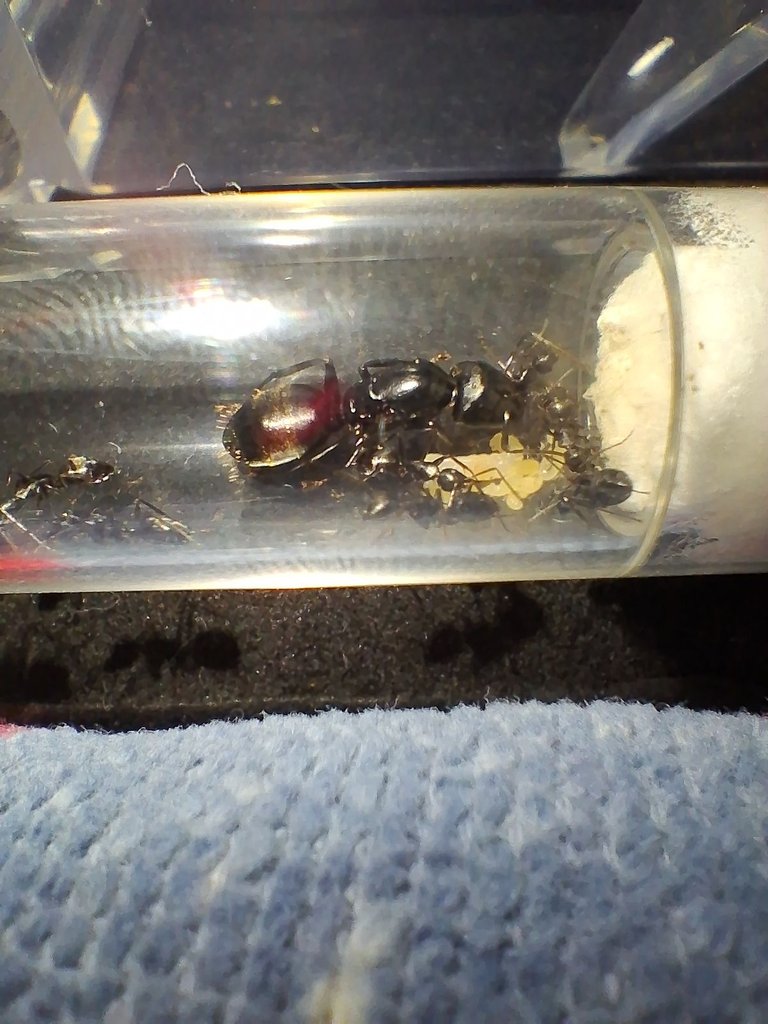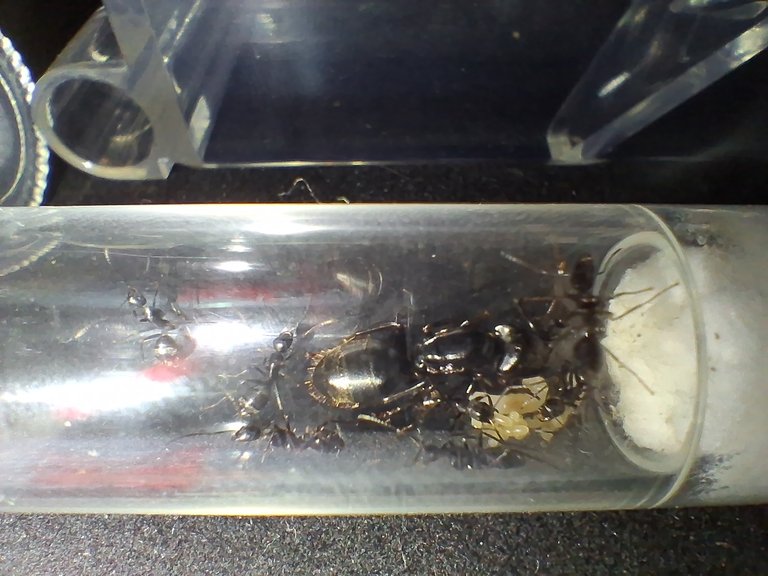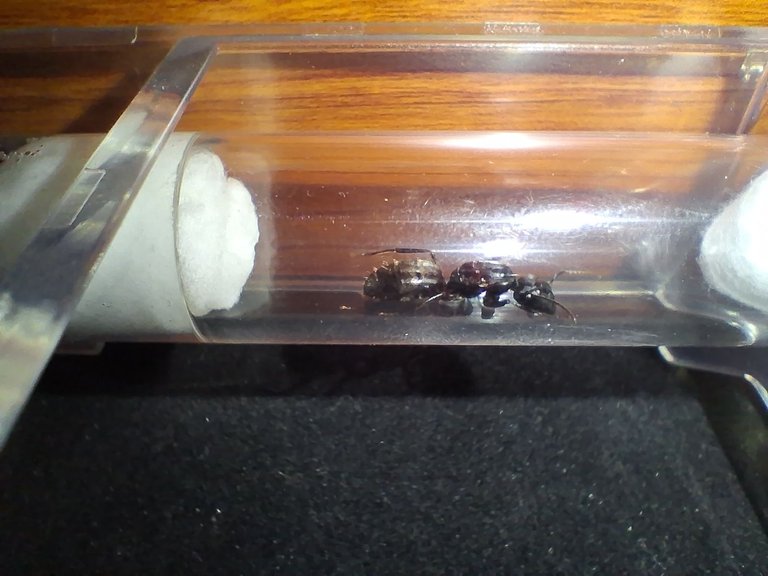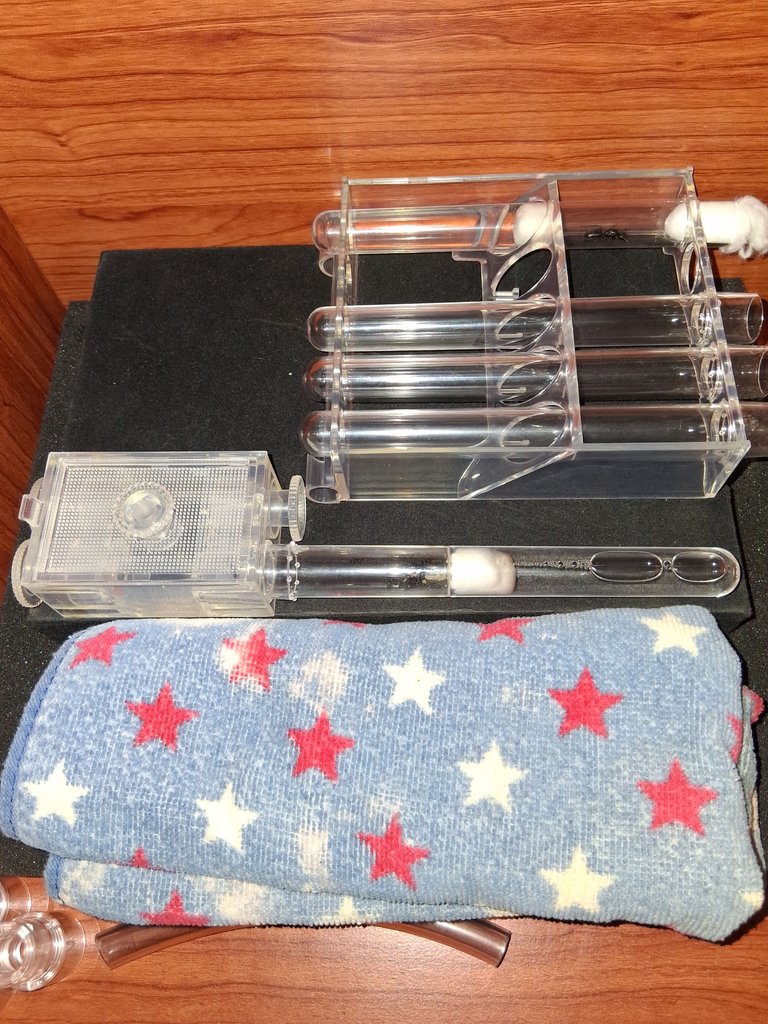Hello Hive Family! My name is Tyler and today, I am taking a break from my recent series of motorsports articles and writing about another subject that I find quite interesting – my young ant colonies. I found and captured my first ant queen last year to start my first colony, and yesterday I found another queen ready to start a colony!
I've been interested in ants for years, which started when I randomly watched an AntsCanada video on YouTube during the lockdowns in 2020, but I had never found or captured a queen until April of 2024. The ant in question was a common black Carpenter Ant (Camponotus Pennsylvanicus) that I decided to name Anttoinette – after Marie Antoinette – thinking it was clever. She didn't have her wings anymore either, which meant she must have just completed her nuptial flight and was looking for a spot to start her colony!

A nuptial flight is the annual mating season for ants. Winged female alates will leave their nest to mate and start their own colony. The male alates’ sole purpose is to reproduce, so once his duties have been performed he passes away.
A few months had passed, and her first set of workers were already born with more on the way, building up a nice pile of brood that would be taken care of by their sisters. I had offered them some organic honey as a food source, which they eagerly lapped up into their social stomachs until it was gone. Things went well for the colony, growing to 9 workers in size before Anttoinette took a break for the upcoming winter brumation.

Similar to hibernation, some species of ants, insects, and reptiles enter a period of rest – becoming dormant during the winter months. During this time, the queen will not lay eggs and the workers will not typically feed, in most cases only waking to defend the nest if/when necessary.
As of about a week ago or so now, Anttoinette started laying eggs in full force after coming out of brumation, adding more eggs to the pile of larvae that would eventually grow to care for their queen and mother. I still offer them organic honey/honeycombs as a food source but I will definitely need to branch out soon to expand their diet and keep them healthy – which I will be posting about in the future!
Contrary to popular belief, Carpenter Ants don't actually eat wood – they just excavate it to build their nests. Typically, carpenter ants will forage the area for sweets like fruit or honey and insects or insect carcasses for protein. Ants are also known to farm aphids for their sweet honeydew secretions, which is astonishing in my personal opinion! Who would have thought that ants were capable of farming other insects?
Yesterday, when I was at work tearing down a deck for remodeling, I found another Carpenter Ant Queen, who also had her wings removed already! I really wasn't prepared to capture her and bring her home, but I didn't want to let her get away either! So, I used my AirPods case to hold her until I was able to relocate her to a test tube setup when I did get home! Honestly, watching Anttionette's colony grow has been both an interesting and exciting experience, and I'm truly thrilled to watch the newly captured Antnita slowly build her colony!

While both of these queens are in different stages of development, it will be fascinating to see how their colonies continue to grow through the year! I would expect Antnita to progress at about the same level as Anttoinette did last year, so hopefully we will get to see another 9 worker ants hatched for the new queen before winter brumation – but I guess we'll just have to wait and see how it goes!

For now, Anttoinette will remain in the test tube setup attached to the test tube portal, but I am predicting that her colony will grow large enough to need to be moved into a nesting box or outworld before the end of the year. Antnita will most likely remain in a test tube setup for about another year before her colony will be ready for a nest, only being moved when the water runs out of her current tube.
Moving forward, I will be posting updates on the continued growth and development of both colonies and anything else that I find fascinating about these magnificent creatures that God has created for us to marvel at. I will also be keeping a container on me just in case I cross paths with another queen! Thanks for checking out my blog, and I hope you all have a wonderful rest of your week!
Go to the ant..
Observe her ways and be wise
Proverbs 6:6 NASB95
God Bless,
Tyler James